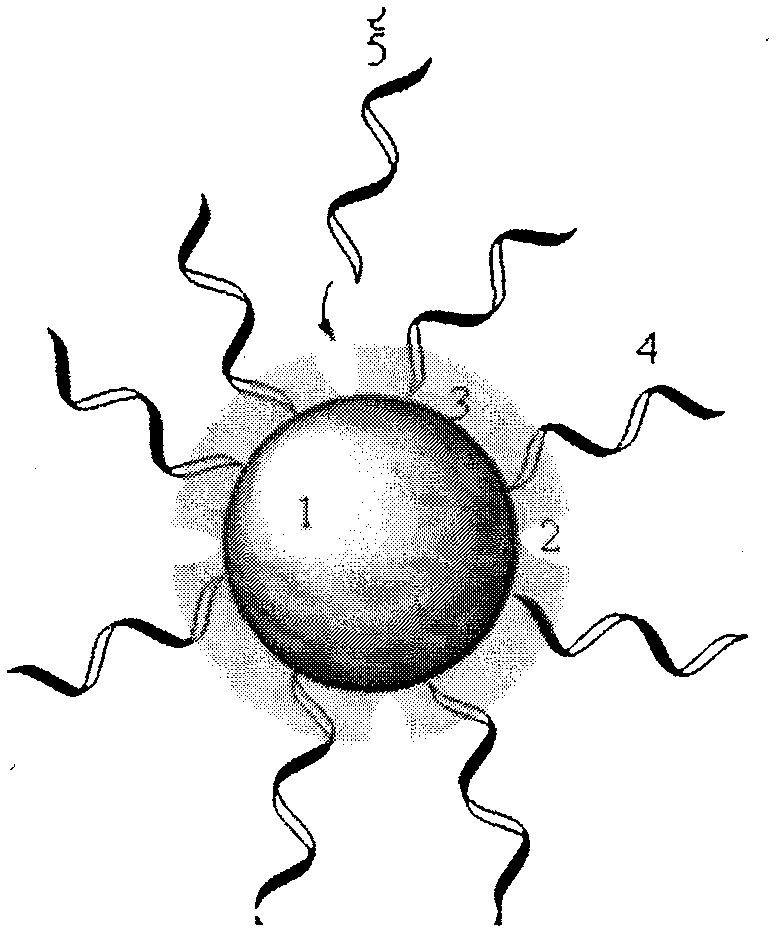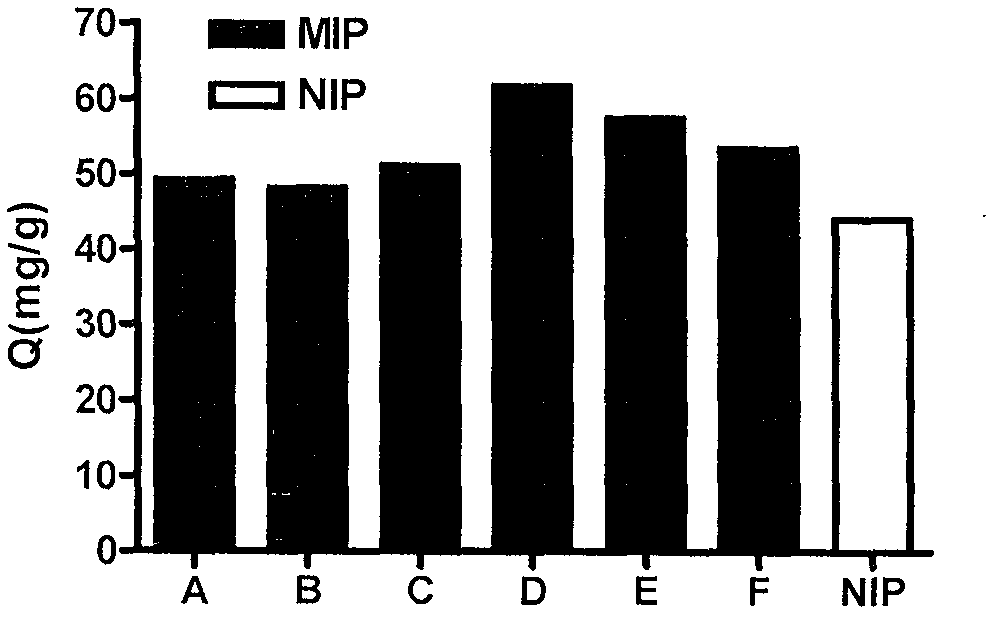Preparation and use method of stereo floating protein molecule imprinting chromatographic stationary phase
A chromatographic stationary phase and molecular imprinting technology, which is applied in the field of chromatographic separation, can solve problems such as protein stereorecognition effects that are not considered, and achieve the effect of overcoming low adsorption capacity
- Summary
- Abstract
- Description
- Claims
- Application Information
AI Technical Summary
Problems solved by technology
Method used
Image
Examples
Embodiment 1
[0023] (1) Modification of the surface of silica gel: Weigh 1 g of non-porous silica gel (1.7 μm) into a 100 ml round bottom flask, add 40 mL of ultrapure water, cook in boiling water for 2 hours, cool, filter, rinse with methanol and dry overnight. Add 50mL of toluene (dry) to the dried silicon spheres, slowly add 2mL of 3-glycidoxypropyltrimethoxysilane dropwise, reflux at 120°C for 17h, cool and suction filter, wash with acetone and ethanol three times, and dry until use.
[0024] (2) Preparation of three-dimensionally floating hemoglobin-imprinted silicon spheres: Weigh 100 mg of the above materials into a round-bottomed flask, add 25 mL of 0.75 mol / L IDA solution, react in a water bath at 70°C for 17 hours, and wash with a large amount of water to remove the remaining IDA. Add 25mL 0.100mol / L CuSO4 aqueous solution, shake the reaction for 30min, and wash off the remaining CuSO4. Add 2 mL of hemoglobin (Hb, 5 mg / mL) in PBS solution (100 mM, pH=8.0), absorb for 10 min, and...
PUM
 Login to View More
Login to View More Abstract
Description
Claims
Application Information
 Login to View More
Login to View More - R&D
- Intellectual Property
- Life Sciences
- Materials
- Tech Scout
- Unparalleled Data Quality
- Higher Quality Content
- 60% Fewer Hallucinations
Browse by: Latest US Patents, China's latest patents, Technical Efficacy Thesaurus, Application Domain, Technology Topic, Popular Technical Reports.
© 2025 PatSnap. All rights reserved.Legal|Privacy policy|Modern Slavery Act Transparency Statement|Sitemap|About US| Contact US: help@patsnap.com



